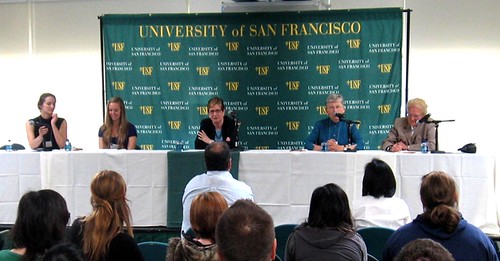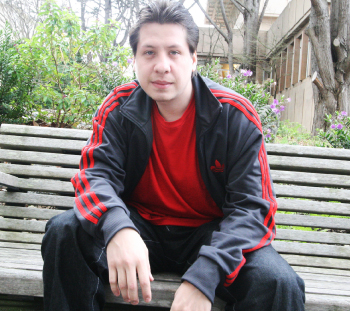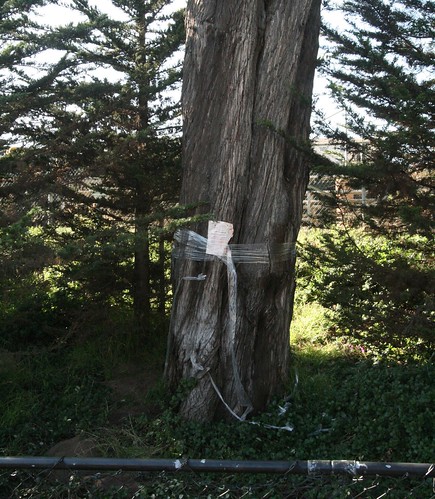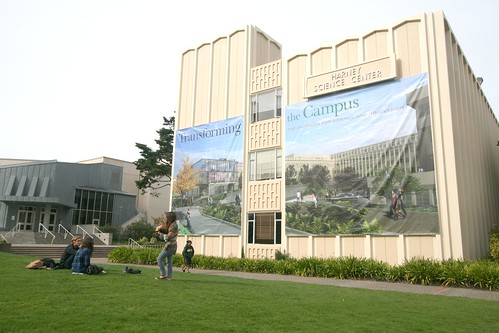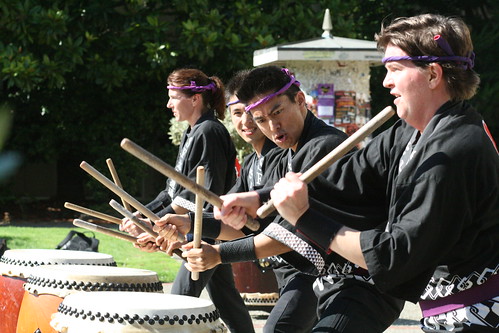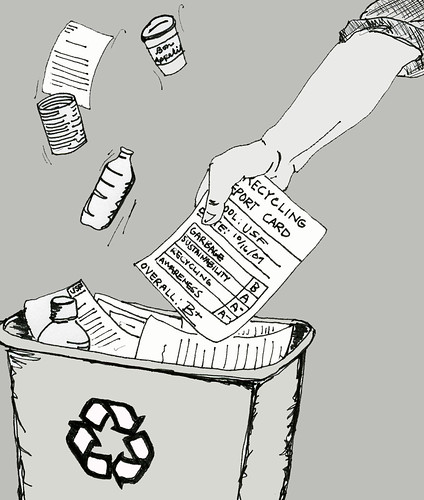 Three and a half years ago, I stepped into the Foghorn office with the vague idea that joining the school newspaper might be a good hobby. I got my first assignment from an editor and dutifully fulfilled it. I went back and got another. What can I say? I became hooked on seeing my name in print. Today I write my last ever article as editor in chief, as the Foghorn crew and I finish the last issue of my college career. It is an insignificant moment for most, but for me it is the end of an era. More than anything I’ve done at USF, working at the Foghorn is what I will remember and cherish most.
Three and a half years ago, I stepped into the Foghorn office with the vague idea that joining the school newspaper might be a good hobby. I got my first assignment from an editor and dutifully fulfilled it. I went back and got another. What can I say? I became hooked on seeing my name in print. Today I write my last ever article as editor in chief, as the Foghorn crew and I finish the last issue of my college career. It is an insignificant moment for most, but for me it is the end of an era. More than anything I’ve done at USF, working at the Foghorn is what I will remember and cherish most.
What didn’t I love about working at the Foghorn? The people are wonderful: smart, sarcastic, creative and sometimes downright bizarre. I love the late, sleepless nights spent in the office, tweaking words and photos for hours until everything seems just so. I love the controversies, the arguments and the occasional stories that get us in trouble. Best of all, I love the rare but wonderful moments when a student or faculty member stops me and tells me something they liked about the paper.
While we had our share of typos and gaffes, I walk away extremely proud of the work the Foghorn has produced during my time here. We have covered a great many triumphs and tragedies, attempting to share as many stories of student achievements, athletic victories and artistic endeavors as possible. I only hope the members of the university community feel we’ve done them justice.
Working at the Foghorn has afforded me many great opportunities to meet impressive men and women from around the world – artists, authors, journalists, politicians – I even made a trip to Washington D.C. to interview House Speaker Nancy Pelosi. As much as I have appreciated these encounters, many of the USF students I have met through my work at the Foghorn have impressed me equally.
At USF we have students who start businesses, raise funds for the needy, fight for human rights, write books, create art, compete in athletics, travel the globe, grow their own food, and do a million and one other amazing things on a daily basis. Interviewing and writing about these people has inspired me and opened my eyes to a world of possibilities.
As I prepare to leave the Foghorn and USF, I owe many thanks to many people. First to the tireless workers who brew the coffee in the cafeteria, mow the lawns, clean the toilets, and put the books back on the shelves. I don’t think any of us ever thank you enough. Second, to the incredible faculty who have guided me and expanded my mind – I may have rolled my eyes when you assigned another essay or reading assignment, but in the end I am truly grateful. Third, to the wonderful students I have studied with and learned from. As I mentioned earlier, I have been continuously surprised and impressed by all that you can achieve. Finally to my professor and Foghorn advisor Teresa Moore. You have challenged me tremendously in and out of the classroom over the past four years, and I have consistently strived to live up to your high expectations. For as long as I live, I will most likely hear your voice in the back of my head every time I try to put words on paper. (And, if you are reading this column and thinking it sounds like a “bad Valedictorian speech,” I’m sorry!)
As the Foghorn moves on without me, I know it will be in good hands. As long as there is a team of intelligent, dedicated people to carry on its century-long legacy, the Foghorn will be an important presence at USF. I simply feel honored to have been a part of it all.
Freedom and fairness for life!

